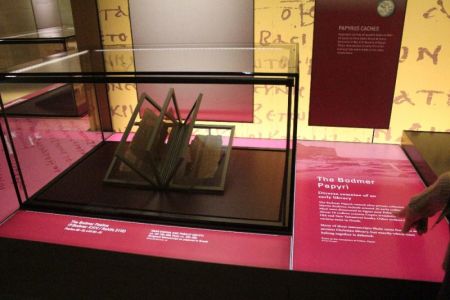How 'Stele' Proved the Historicity of the House of David

Once again, a little digging in the Holy Land has unearthed a major find, and another confirmation of Biblical history.
Since the nineteenth century, history has been regarded as an enemy of the Bible. For nearly two centuries, biblical scholars, taking their cues from F.C. Baur, the founder of what came to be known as the "Tübingen School," proceeded from the assumption that, while the biblical texts said a great deal about what their authors believed, there was very little history, as we understand the term, contained therein.
According to this "reasoning," figures such as David and Solomon were, at best, minor chieftains, if they existed at all. Then, in 1994, an inscribed stone known as a "stele," was found near Tel Dan in Northern Israel. Dating from the ninth century before Christ, it refers to the "House of David." It was erected to celebrate the victory of the Aramean king (most likely Hazael) over the forces of Israel. In 1 Kings 19, by the way, God had Elijah anoint Hazael king of Aram.
So, now historians had to admit that David was real and that he had founded a dynasty. So, what else might be real? As it turns out, quite a lot. John Stonestreet and I have told you about many other examples, such as evidence of the extent of Solomon's reign, seals belonging to King Hezekiah, a latrine built to desecrate a pagan shrine, and even possible evidence of Naboth's vineyard.
The latest example also involves seals. According to the Israeli newspaper Haaretz, archaeologists recently announced that they had found "A fantastically preserved seal impression made by the biblical Governor of Jerusalem. The seal dates from the 7th Century BC, which puts it during the reign of king Josiah.
As it so happens, the Old Testament contains two references to the Governor of Jerusalem during the reign of Josiah.
2 Kings 23 tells readers, "Josiah brought all the priests from the towns of Judah and desecrated the high places, from Geba to Beersheba, where the priests had burned incense. He broke down the gateway at the entrance of the Gate of Joshua, the city governor, which was on the left of the city gate."
2 Chronicles 34 says that ". . . in the eighteenth year of [Josiah's] reign, when he had purged the land, and the house, he sent Shaphan the son of Azaliah, and Maaseiah the governor of the city. . . . . to repair the house of the Lord his God."
In both instances, the position of Governor was part of an effort to root out paganism and syncretism from Judah.
While we can't be certain whether the recently discovered governor's seal belonged to Joshua or Maaseiah, we can be certain that we are dealing with real history. We can be certain that texts are telling us what happened as well as why it happened.
So history, far from being the Bible's enemy, is its friend.
Obviously, our faith isn't in history or archaeology. It's in a God who has acted in human history. These actions, in turn, have left behind artifacts. Some are monumental, such as the remains of the Temple or Solomon's Gate at Gezer. Others, like the governor's seal, are the size of your thumbnail. But they all speak to the historical nature of biblical faith.
Now before I leave you today, I wanted to remind you that every January hundreds of thousands of Christians mark the anniversary of Roe v Wade, which legalized abortion on demand in this country. I'd like to invite you to join in what has become an annual event for BreakPoint and the Colson Center: the 21 Days of Prayer for Life.
First published at BreakPoint.





















